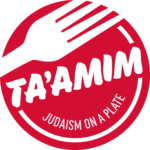The Story of the Jam Doughnut and the State of Israel
We think of jam doughnuts (sufganiot) as being a ubiquitous Chanukah snack – deep-fried, golden, and oozing its jammy contents with each bite. But, in fact, jam doughnuts are part of the story of the modern State of Israel. They are the story of perseverance and pragmatism, much like Chanukah itself.
The first recipe for a jam doughnut is found in the Kuchenmeisterei (Mastery of the kitchen) cookbook printed in 1485 in Nuremberg, Germany. Incidentally, this is the first cookbook printed on Johannes Gutenberg’s revolutionary printing press. The recipe is given for ‘Gefullte Krapfen’ – filled doughnuts.
For Jews growing up in Germany, a jam doughnut was a staple sweet, sold on street corners and bakeries. But in the nascent State of Israel in the early 1920s, they still hadn’t inexorably tied themselves to Chanukah the way yule logs are tied to Christmas. The association was one we created.
In the late 1920s, the Histadrut – Israel’s labor federation – was facing a challenge. The Histadrut represented 75% of the Jewish labor force of Mandatory Palestine and that labor force, come winter, was left looking for work. The Histadrut decided that the way to create more work during the winter was to champion the doughnut.
Up until this point, Chanukah for many jews was celebrated with fritters of all kinds. For Eastern European Jews these were mainly “levivot” (Hebrew for latkes). For Sephardic communities, it was versions of fried dough drenched in sugary syrups. But the jam doughnut, unlike these homey treats, required more skill and though they could be made at home, they would be far better made in a bakery.
By championing the doughnut as a Chanukah food, the Histadrut created jobs — be it in bringing the ingredients to the bakery, making the dough, shaping the dough, frying the doughnuts, filling the doughnuts, or delivering the doughnuts all over the country to small markets and large stores. The country as a whole got behind the idea that Chanukah would only be Chanukah if doughnuts were involved. The Histadrut’s campaign was so successful that one hundred years later, Chanukah and doughnuts go hand in hand.
In 2014, approximately 18 million doughnuts were sold in Israel. That was approximately 3 doughnuts per citizen! And what of our modern-day Maccabees? The Israel Defence Forces in the same year purchased 50,000 doughnuts a day for the 8 days of Chanukah.
Chanukah, Israel, and Jews: we are all the inheritors of the stories of pragmatism and perseverance of our forebears, and sometimes all we need as a reminder of our incredible journey is to bite into a doughnut.


